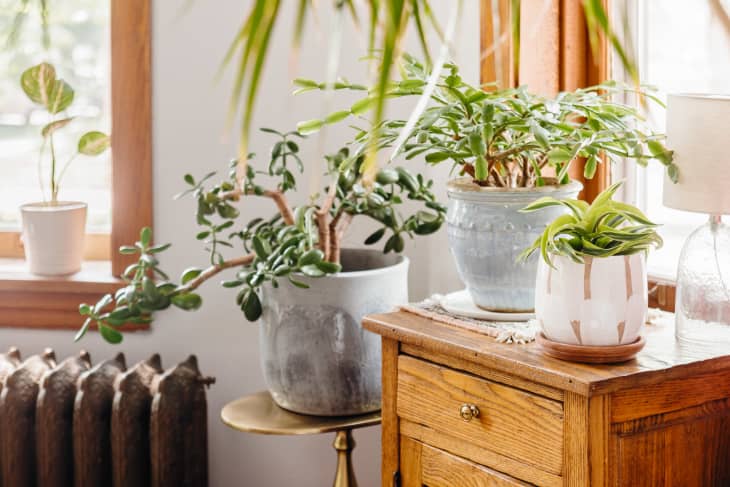Killed Your Plant? It’s OK! Here’s What to Do Next

Owning a houseplant isn’t always picture-perfect. Even the most experienced houseplant collector can struggle with unhappy plants. It’s easy to get caught up in the virtual world of immaculate images of peace lilies and English ivy on Instagram or TikTok. If your plant dies, you must be a failure, right?
No! Don’t be so hard on yourself. Plus, don’t forget that most houseplants are native to the tropics — and most homes are definitely not tropical rainforests. Even with tools like moisture meters, humidifiers, and grow lights, it can still be a struggle to keep your houseplants happy.
Don’t get discouraged if your houseplant dies — it’s all part of the learning curve. But what should you do if you lose a plant or two? What should you do with all that potting mix? What about the containers? The dead plant? Fear not. A few quick steps will get you back to where you started — ready to give houseplant ownership another go.
Plant Disposal
Whether you’re someone who lives in a rural area and has a compost bin or someone who lives in a small studio in a big city and can only throw dead plants right in the trash, there are a few things to think about after you realize your plant isn’t coming back to life.
Generally speaking, it’s okay to put dead plant matter directly in the trash or the compost bin. However, if your plant is a victim of a pest infestation, it’s best to take extra measures to make sure your other plants don’t become infested too.
To accomplish this, you’ll need an additional bag or container. Over the years I’ve used trash bags, recycled shopping bags, and even paper bags that I’ve rolled over and stapled shut.
Take the dead, infested plant out of the container and shove it into the bag. Fasten it shut, as tightly as you can, and put it in the trash bin. If you feel like that’s not enough, take out the trash. Get it out of your house. Pests like aphids and spider mites can easily crawl (or get a ride on a breeze) out of the compost bin or open trash and find their way to your other plants.
It’s better to be safe than fuel a full-fledged infestation.
Reusing Soil
This is a question that I get quite often as a houseplant professional. Can you reuse the remaining soil in a container if the plant has died?
The short answer is yes — generally speaking, it’s okay to reuse the soil if the plant that lived in it died of “natural” causes like temperature damage. You must proceed with caution, though, because pests and disease can easily hide in potting mix that looks “okay.”
If you’re going to reuse your potting soil, you need to take a few extra steps to make sure you’re in a safe zone for your new plant.
Before you do anything, you need to sterilize the soil. In order to sterilize your already used soil, you need to sift out any old roots, leaves, and other debris.
The easiest and least hands-on way to sterilize is to put the soil in an airtight container and leave it in the sun for a few weeks. The heat and lack of airflow will kill any bacteria or bugs left over.
Doing this also depletes the nutrients in the soil, so you’ll need to reinvigorate it with a dose of fertilizer before it’s ready for a new plant. One of the easiest ways to do this is to mix in slow-release fertilizer.
Reusing Pots
If you’re not reusing your pots and containers, you’re definitely wasting money. Just because the last plant you put in it perished doesn’t mean that it’s unsuitable. A good scrub with a stringent cleaner (I like to use diluted bleach, but even Dawn dish soap works) will have the container ready for your next favorite plant.
The only exception being that some containers and planters sold at discount stores are sometimes made with toxins that leach into your soil. Once my mom bought this adorable planter from HomeGoods and it ended up killing two or three ivies before she realized there was something toxic in the interior glaze. Buyer beware!